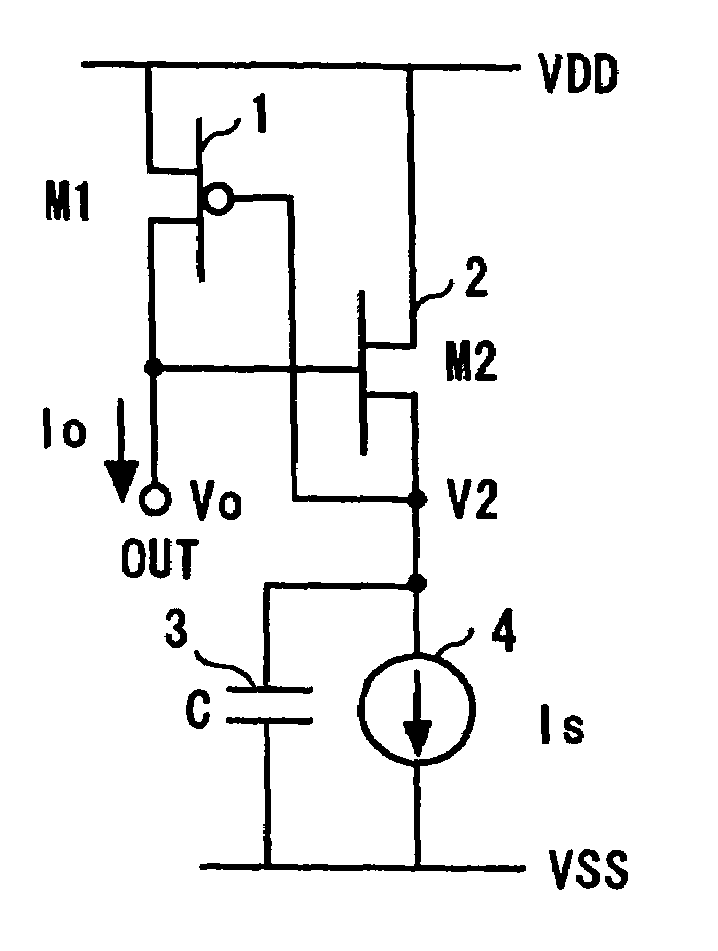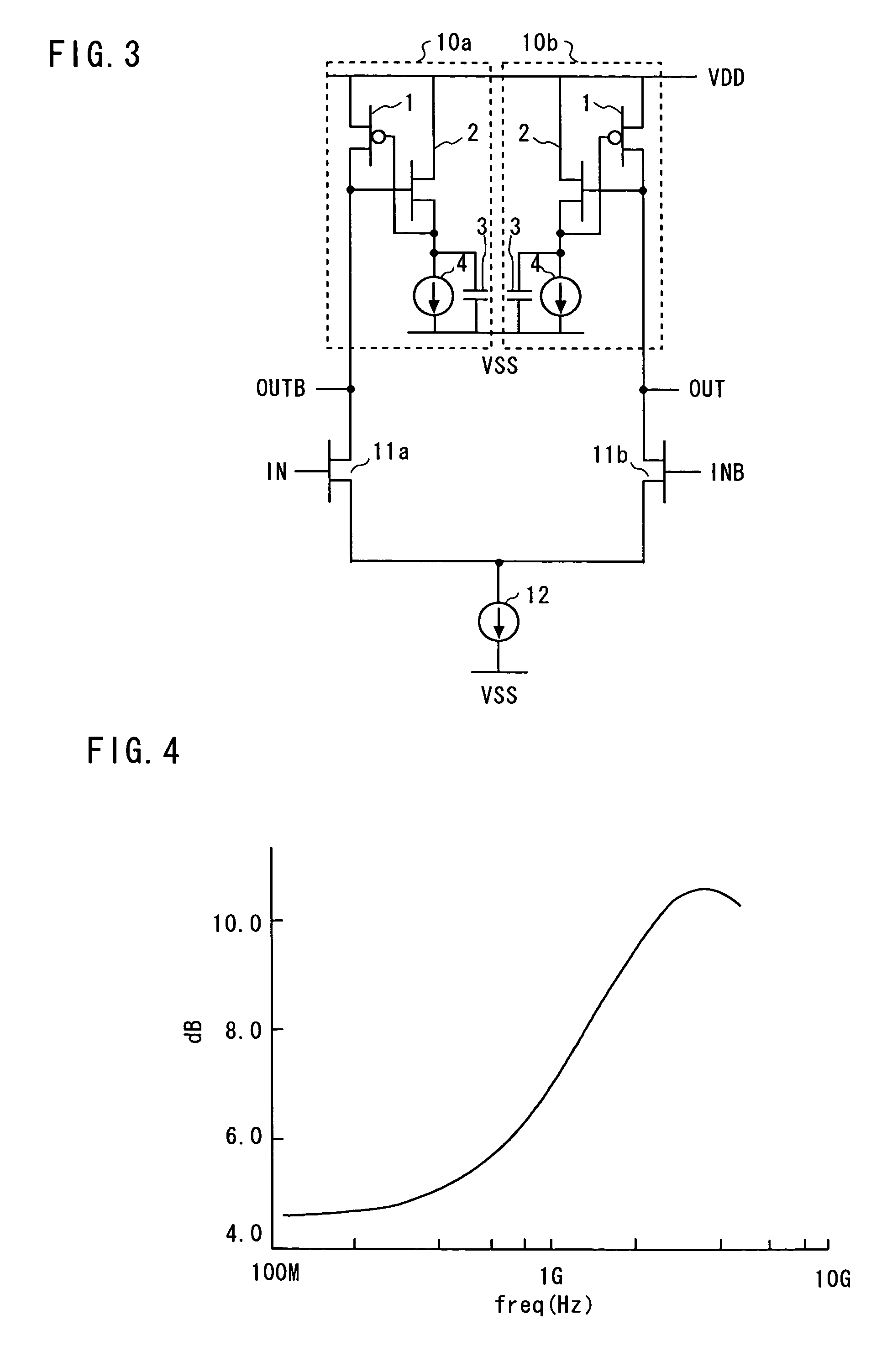Active inductance circuit and differential amplifier circuit
a technology of active inductance and differential amplifier, which is applied in the direction of network simulating reactance, multiple-port active network, frequency selective two-port network, etc., can solve the problems of reduced logic that can be carried on the chip, increased cost due to chip size increase, and reduced inductance located in the chip fabricated by using wiring layers. , to achieve the effect of reducing the number of elements and small voltage drop
- Summary
- Abstract
- Description
- Claims
- Application Information
AI Technical Summary
Benefits of technology
Problems solved by technology
Method used
Image
Examples
first embodiment
[0033]FIG. 1 shows the first embodiment of the active inductance circuit in accordance with the present invention. In FIG. 1, the source of a P-type MOS transistor M1(1) is connected to a high-voltage power source VDD and the drain is connected to an output terminal OUT. The drain of an N-type MOS transistor M2(2) is connected to the VDD directly or via an element for protection against surge. The source of the N-type MOS transistor M2(2) is connected to a current source 4. The gate of the N-type MOS transistor M2(2) is connected to the drain of the P-type MOS transistor M1(1) or to the output terminal OUT, thereby forming a source follower circuit.
[0034]The current source 4 is connected to a low-voltage power source VSS. The gate of the MOS transistor M1(1) and a capacitor 3 are connected to the source of the NMOS transistor M2(2). The other terminal of the capacitor 3 is connected to the VSS. The capacitor 3 and current source 4 are connected in parallel between the source of the ...
second embodiment
[0050]FIG. 3 is a circuit diagram illustrating the configuration of the differential amplifier circuit of the second embodiment. Referring to FIG. 3, NMOS transistors 11a and 11b constitute a differential pair and are commonly connected at the source side and connected to a current source 12. The current source 12 is connected to a low-voltage power source VSS. Gates of the NMOS transistors 11a and 11b are connected to input terminals IN and INB. The active inductors 10a and 10b that have been explained with reference to FIG. 1 are connected to drains of NMOS transistors 11a and 11b, respectively. Drains of PMOS transistors M2(2) of respective active inductors 10a and 10b are connected to respective drains of NMOS transistors 11a and 11b.
[0051]In other words, the drains of NMOS transistors 11a and 11b are connected to respective output terminals of the active inductors 10a and 10b, the nodes are connected to output terminals OUTB and OUT, and signals are outputted. The IN and OUTB ...
third embodiment
[0054]FIG. 5 is a circuit diagram illustrating the configuration of the differential high-pass amplifier circuit of the third embodiment. Referring to FIG. 5, NMOS transistors 11a and 11b constitute a differential pair, and current sources 12a and 12b are connected to respective sources of NMOS transistors 11a and 11b. The current sources 12a and 12b are connected to a low-voltage power source VSS. Further, a capacitor 13 is connected between the sources of NMOS transistors 11a and 11b. The active inductors 10a and 10b that have been explained with reference to FIG. 1 are connected to drains of NMOS transistors 11a and 11b, respectively.
[0055]The connection mode of active inductors 10a and 10b and NMOS transistors 11a and 11b is identical to that of the second embodiment. Using such a circuit configuration makes it possible to realize a high-pass amplifier in which a gain in a low-frequency region is further suppressed. A resistor can be used as impedance instead of the capacitor 13...
PUM
 Login to View More
Login to View More Abstract
Description
Claims
Application Information
 Login to View More
Login to View More - R&D
- Intellectual Property
- Life Sciences
- Materials
- Tech Scout
- Unparalleled Data Quality
- Higher Quality Content
- 60% Fewer Hallucinations
Browse by: Latest US Patents, China's latest patents, Technical Efficacy Thesaurus, Application Domain, Technology Topic, Popular Technical Reports.
© 2025 PatSnap. All rights reserved.Legal|Privacy policy|Modern Slavery Act Transparency Statement|Sitemap|About US| Contact US: help@patsnap.com



